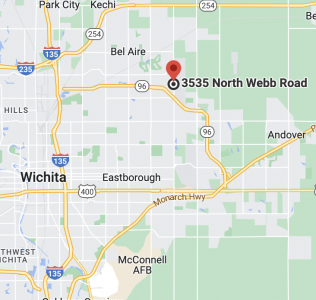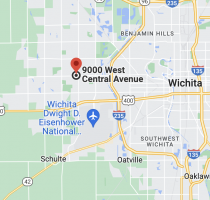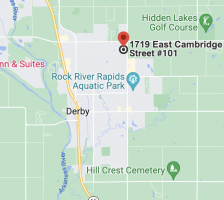Heart Disease
No one wants to have heart disease, and fortunately, there are many steps that you can take to help prevent it. One of the first things you can do is identify the risk factors that you have for heart disease. Some risk factors cannot be changed, such as those that you are born with, but many heart disease risk factors can be eliminated or decreased by making heart-healthy changes in diet and lifestyle.
It is very important that you tell your doctor about your risk factors and family history of heart disease. The caring doctors and professionals at Heartland Cardiology genuinely listen to your concerns. They will discuss your risk factors in terms that you can understand. Together, you and our innovative team will develop an individualized heart-healthy plan formulated for your success.
Heart Disease Risk Factors
Risk factors may increase your likelihood of a heart attack, although some people that experience a heart attack do not have any risk factors. People with all of the risk factors may never develop a heart attack; however, the likelihood increases with the more risk factors you have.
Overweight and Obesity
Overweight and Obesity
Obesity is a major risk factor in itself for heart disease. Being overweight or obese increases the risk of damage to your heart and blood vessels. Increased body weight makes your heart work harder. Excess weight can contribute to high blood pressure, high cholesterol, high triglycerides, and diabetes, all conditions that increase the risk of heart disease and can lead to heart attack.
Body Mass index (BMI)
In addition to evaluating your weight in pounds, it is important to know your Body Mass Index (BMI). Your Body Mass Index is a calculation that reflects your body fat.
Waist Circumference
Your waist circumference is another way to assess your heart disease risk. Simply use a tape measure to measure the distance around your waist at the location just above your belly button. Healthy waist circumferences for men are less than 40 inches. Healthy waist circumferences for women are less than 35 inches.
How to reduce your risk
Losing weight and reducing Body Mass are risk factors that most people can control and are one way you can reduce the risk of heart disease. All of your efforts really do count. Even losing as few as 10 pounds can help.
High Blood Pressure
High Blood Pressure
High Blood Pressure “hypertension” increases the risk of a heart attack or stroke because it can cause significant heart, blood vessel, and organ damage. Because high blood pressure does not have symptoms, it is termed the “silent killer.” The only way to know if you have high blood pressure is to get tested.
Blood Pressure Readings
Normal
systolic (top number) less than 120
diastolic (bottom number) less than 80
Prehypertension
systolic (top number) 120-139
diastolic (bottom number) 80-89
High Blood Pressure Stage 1
systolic (top number) 140-159
diastolic (bottom number) 90-99
High Blood Pressure Stage 2
systolic (top number) 160 or higher
diastolic (bottom number) 100 or higher
How to reduce your risk
You should have your doctor check your blood pressure. In between your doctor appointments, monitor your blood pressure with home blood pressure testing. Report any increases in blood pressure to your doctor.
High blood pressure is treated with prescription medications and lifestyle changes. It is very important to take prescription medications exactly as prescribed. Do not stop taking your prescription medication without talking to your doctor first.
Some people can lower their blood pressure with lifestyle changes including weight loss, exercise, and dietary changes. You should work towards achieving and maintaining your ideal weight. Even a small weight loss is beneficial. It is helpful to eat low salt, low fat, low calorie, low cholesterol, and high fiber food. The Dietary Approaches to Stop Hypertension (DASH) diet is a helpful guide for people with high blood pressure. You should quit smoking, quit illegal drug use, and avoid alcohol.
High Cholesterol
High Cholesterol
High cholesterol “dyslipidemia” increases the risk of a heart attack and stroke. High cholesterol occurs when there is too much or an unhealthy balance of cholesterol in the blood. Your body needs some cholesterol for healthy functioning but too much is dangerous for your health. High cholesterol has no symptoms. The only way to find out if you have high cholesterol is to get a simple blood test at your doctor’s office.
A total cholesterol test shows the total amount of cholesterol in your blood. A more detailed test, a lipid profile, includes lipoprotein measurements that are more useful and reflective of your health. Your liver produces cholesterol and it travels into your bloodstream on fat and protein carriers called lipoproteins. The two main types are low-density lipoprotein (LDL) and high-density lipoprotein (HDL) cholesterol.
Most cholesterol is LDL. LDLs carry more fat than protein and are more likely to collect on the walls of blood vessels, which can contribute to heart disease. LDLs are the “bad cholesterol.” To help remember this, the “L” in LDL is commonly referred to as “lousy.” You want your LDL numbers to be low.
HDL cholesterol contains more protein than fat. HDLs carry cholesterol away from your arteries and out of your body. High HDL levels can reduce the risk of heart attack. The “H” in HDL is commonly referred to as “healthy.” You want your HDL numbers to be high.
What the numbers mean
Total Cholesterol (mg/dL)
Desirable = less than 200
Borderline High = 200-239
High = Greater than 240
LDL Cholesterol (mg/dL)
Optimal = less than 100
Near/Above Optimal = 100-129
Borderline High = 130-159
High = 160-189
HDL Cholesterol (mg/dL)
Low = less than 40 for men, Less than 50 for women
Desirable/High = Greater than 60
How to reduce your risk
You should have your cholesterol tested by your doctor. High cholesterol is treated with prescription medications, lifestyle changes, and dietary changes. After being diagnosed with high cholesterol, your doctor will regularly monitor your cholesterol levels, the effectiveness of your prescription medication and lifestyle changes, and check for any medication side effects.
You should make lifestyle changes to reduce the risk factors that you can control. This includes not smoking, losing weight and maintaining a healthy weight, and regular exercise. Exercise helps to raise HDL and lower LDL.
You should eat a low fat, low cholesterol, high fiber diet. The National Cholesterol Education Program, a division of the National Heart, Lung, and Blood Institute, has eating guidelines for people with high cholesterol. The American Heart Association’s Cholesterol Low Down is another good source for eating and exercise guidelines.
High Triglycerides
High Triglycerides
High triglycerides contribute to atherosclerosis “hardening of the arteries” that increases the risk of heart attack and stroke. High triglycerides are a fat that your body produces and you get from foods that you eat. Eating more calories that you need contributes to high triglycerides. In some people, the condition is hereditary. The only way to find out if your triglyceride levels are high is to receive a simple blood test at your doctor’s office.
What the numbers mean
Triglycerides (mg/dL)
Normal = Less than 150
Borderline High = 150-199
High = 200-499
Very High = 500 or greater
How to reduce your risk
You can reduce your triglyceride levels and decrease your risk of heart disease with healthy eating, weight loss, and prescription medications. For people with diabetes, it is helpful to control your blood sugar levels.
It is helpful to lower your intake of sugar. Your should lose weight and maintain a healthy weight. Regular exercise is another way to reduce triglyceride levels. Your doctor may prescribe prescription medication.
Diabetes
Diabetes & Pre-Diabetes
Heart disease is the leading cause of diabetes-related death in the United States. Diabetes is a disease that affects how the body uses glucose, a sugar that is a source of fuel. Diabetes and pre-diabetes damage blood vessels when blood sugar levels are out of control. The only way to find out if you have diabetes is to receive a simple blood test from your doctor.
Type 1 Diabetes, Type 2 Diabetes, and Pre-Diabetes are various types of the condition. Uncontrolled diabetes and even Pre-Diabetes can contribute to heart disease, heart attack, and stroke. People with Type 1 Diabetes do not produce insulin. Insulin is a hormone that helps glucose enter body cells. People with Type 1 Diabetes must be treated daily with insulin to maintain healthy blood sugar levels.
People with Type 2 Diabetes produce insulin, but they either do not produce enough or the insulin is not very effective in allowing glucose to get into the body’s cells. As a result, glucose remains in the bloodstream. Before most people develop Type 2 Diabetes, they experience Pre-Diabetes, a condition of elevated blood glucose levels.
What the numbers mean
Fasting Plasma Glucose Test (mg/dL)
Pre-Diabetes = 100-125
Diabetes = 126 or higher
Oral Glucose Tolerance Test (mg/dL)
Pre-Diabetes = 140-199
Diabetes = 200 or higher
How to reduce your risk
If you are diagnosed with diabetes, it is very important to vigilantly monitor your blood glucose levels and take insulin or other prescription medications as directed. There is no cure for Type 1 Diabetes. People with Type 1 Diabetes must receive insulin daily. People with Type 2 Diabetes and Pre-Diabetes may be able to reverse their condition by losing weight and eating a low carbohydrate, high fiber diet.
If you are diagnosed with diabetes, your doctor will refer you to diabetic education classes and a nutritionist to help you get a healthy start on managing your condition. The American Diabetes Association offers a wealth of information regarding healthy eating, exercise, and blood glucose monitoring.
Metabolic Syndrome
Metabolic Syndrome
Metabolic syndrome increases the risk of heart disease, heart attack, and stroke. Metabolic syndrome is a termed used to describe the combined effects of several conditions, including high blood pressure, insulin resistance, abnormal cholesterol, abnormal triglycerides, and obesity with excess body fat around the waist. Metabolic syndrome means that you have several of such conditions at the same time.
Your doctor can evaluate you for metabolic syndrome. If you have at least one component of metabolic syndrome, ask your doctor to check for the other conditions. A diagnosis of metabolic syndrome requires three of the following conditions to be present: obesity with fat on the waist, elevated triglycerides, reduced HDL cholesterol, high blood pressure, an elevated fasting blood sugar, or you are already receiving treatment for high blood sugar.
How to reduce your risk
Some of the conditions included in metabolic syndrome may have a hereditary component, and you cannot change that. However, you can reduce your risk of heart disease by monitoring and maintaining the conditions that you do have. Lifestyle changes can help improve all of the metabolic syndrome components. If lifestyle changes alone do not resolve your conditions, your doctor may recommend prescription medications to help. Ask your doctor if aspirin therapy is right for you.
It is helpful to exercise regularly and lose weight. Even losing as little as 5% to 10% of your total body weight can lower your blood sugar levels and blood pressure. A nutritionist can help with healthy food choices and meal planning. Stop smoking. Smoking contributes to high blood pressure and increases insulin resistance.
Smoking
Smoking
Smoking is a major cause of heart disease that leads to heart attack. In fact, cigarette smokers have twice the risk of heart attack than non-smokers. Smoking increases the risk of dying from heart disease.
Smoking narrows and contributes to fatty build-up in arteries. Smoking is associated with high blood pressure, atherosclerosis, lung problems, and cancer. Smoking decreases exercise tolerance and decreases levels of good cholesterol (HDL). Smoking increases the tendency for blood clotting.
Cigarette smoking is associated with the highest risk of heart disease. There is a high risk with smoking pipes or cigars, but it is not as great as that of cigarette smoking. Secondhand smoke (smoke from other people) can cause cardiovascular related death and disability.
How to reduce your risk
Smoking is a very preventable cause of heart disease. If you do not smoke, do not start. Do not expose yourself to secondhand smoke. If you do smoke, quit. There are many new smoking cessation products and resources that can make quitting smoking easier, and we are happy to discuss them with you.
Illegal Drug Use
Illegal Drug Use
Illegal drug use can be fatal, even in first time uses. Intravenous (IV) drugs increase the risk of endocarditis, infection of the heart. Cocaine can cause high blood pressure, heart attacks and strokes. Methamphetamine can cause moderate to extremely high blood pressure, uneven heartbeats, chest pain, and heart disease. Children or teens that use illegal drugs may experience serious heart problems or death.
How to reduce your risk
Illegal drug use is a preventable risk factor for heart disease. If you are using illegal drugs, quit. We are happy to provide you with support and resources to help make quitting illegal drugs easier.
Alcohol
Alcohol
Alcohol can cause heart failure and stroke. Alcohol can cause high blood pressure contribute to weight gain and obesity, risk factors for heart disease. Alcohol is a preventable risk factor of heart disease.
How to reduce your risk
If you do not consumer alcohol, don’t start. If you drink, ask your doctor about what drinking in moderation means to you. We are happy to refer you to support and resources that can help make stopping easier.
Individual Response to Stress
Individual Response to Stress
Everyone feels stress from time to time. However, everyone reacts to stress differently. Reacting to stress for prolonged periods of time can contribute to emotional problems, physical problems, and unhealthy habits, such as smoking, over-eating, and low activity levels that can contribute to heart disease.
How to reduce your risk
Stress is a risk factor that you can help control. We will discuss the many methods that you can help reduce stress, such as healthy eating, exercise, relaxation, and sleep. Some newer methods of relaxation are even fun, including pilates, yoga, and massage therapy. In some cases, a referral to a psychologist for counseling or psychiatrist for medication is helpful, and we will help refer you to such specialists
Birth Control Pills
Birth Control Pills
For females, birth control pills and smoking significantly increase the risk of blood clots and heart attack. Even with today’s lower dose pills, women with high blood pressure or who smoke have a higher risk of cardiovascular disease. It is especially a concern for women that are age 35 and older.
How to reduce your risk
Birth control pills are a risk factor for heart attack that you can control. Ask your gynecologist about alternative methods of contraception.
Ethnicity and Minority Group Membership
Ethnicity and Minority Group Membership
Your ethnic minority group membership may play a role in your risk for heart disease and is not a risk factor that you can control. For example, African Americans and Hispanics have a greater risk for high blood pressure and heart disease. African American women have the highest incidence of severe high blood pressure. Hispanics and Asians have the highest risk of metabolic syndrome.
Hereditary
Hereditary
Heart disease can run in families. If your grandparents, parents, brothers, or sisters have heart disease, then your risk is increased.








